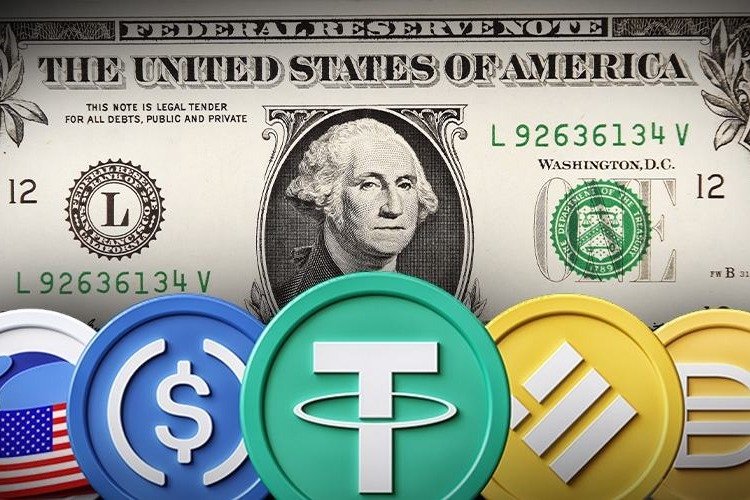Why is the Fed so Worried about Stablecoins?

If somebody takes pains to emphasize to you that he’s a “legitimate businessman”, you can’t help wondering about the wisdom of trusting him with your money. Similarly, when a kind of cryptocurrency calls itself a “stablecoin”, you start to question whether it’s the type of thing in which you should invest.
At this point, the idea of calling into question a stablecoin’s stability is not unfamiliar. A little over a year ago, in the couple of days between May 7th and May 9th, 2022, the third largest stablecoin in the world, UST, crumbled away into nothing. The price of UST was supported by its own sister currency, Luna. As to Luna’s value, it rested on, essentially, the possibility of conversion into... UST. “When the confidence of this circular backing is shaken, the liquidity of algorithmic stablecoins becomes flighty”, explains the Richmond Fed.
However, not every stablecoin is algorithmic and, in fact, UST was unique in this regard. The other two mechanisms used by stablecoins to maintain stability are called on-chain and off-chain collateralization. These two terms cover the stablecoins that rest on a fiat currency like the US dollar or, alternatively, on another cryptocurrency. Most of the collateral that holds up stablecoins actually consists of crypto assets that exist on blockchains.
Over two years ago, in August 2021, Fed Chairman Jerome Powell expressed his concerns about all types of stablecoins. According to the minutes of a Fed meeting at the time, Fed members “highlighted the fragility and the general lack of transparency associated with stablecoins”, as well as the need for tight regulation over them.
And then, in June this year, Powell voiced more of his feelings on the topic before the House Financial Services Committee. He affirmed that “We do see payment stablecoins as a form of money”, but his worries were still evident. “We believe it would be appropriate to have quite a robust federal role” with regard to them, stated the chief. Today we ask: Why is the Fed so worried about stablecoins?
Losing the Faith
It has been widely noted that the weak point about a stablecoin is the fact that “The mechanism breaks down... when the market loses faith in its ability to maintain the peg”, in the words of the Fed. More specifically, when holders of the coin believe its value will drop, there’s the risk of mass requests for coin redemption, which could break the coin’s value completely.
What could trigger the loss of faith in the coin? This could be a drop in value of the assets backing up the coin, or it could be some new reason to distrust the entity overseeing the assets. Or, as the Fed puts it, “the trigger for a run can be merely a sudden lack of confidence in the stablecoin, which could be self-fulfilling”. Whatever it is, the Fed is careful to stress that this risk will not go away until you have the type of scenario where “a dollar of stablecoin is fully backed by a dollar in reserve”, and no other collateral asset intervenes between the two.
Besides this, some of the Fed’s problems surrounding stablecoins include “consumer protection, know-your-customer and anti-money-laundering compliance, and the scalability and efficiency of settlements”. But what are these coins actually good for?
Special Talents of a Stablecoin
It sometimes costs low-income people as much as $12 a month to simply keep their bank accounts open. Stablecoins may be able to offer them cheaper, quicker, and safer financial services. With their special powers, stablecoins can connect unbanked portions of the population with the financial system. According to the Harvard Business Review, “stablecoins have the potential to play an important (if yet to be defined) role in the future of global finance”.
To get an idea of the complexity of what stablecoins are able to do: the Fed describes them as “self-contained building blocks that interoperate with smart contracts to create payment and other services”.
Signing Off
Powell has actually said that the creation of a central bank-issued digital coin (CBDC) could render cryptocurrencies and stablecoins obsolete. Federal Reserve Governor Lael Brainard said, back in 2021, that she believes it makes sense for the Fed to produce a CBDC. In spite of this, Powell announced in June of this year that the Fed wasn’t even close to coming out with one.